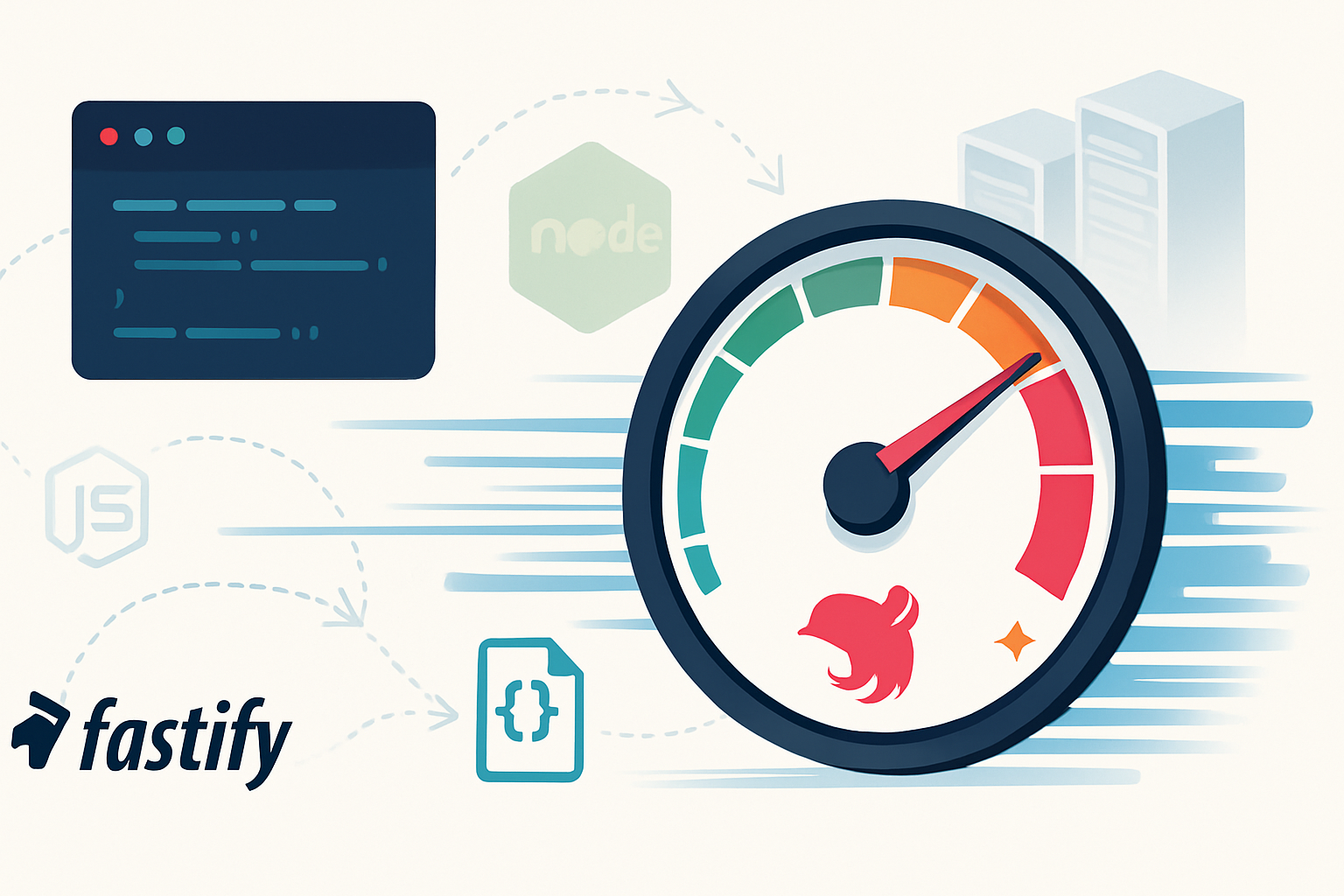· frameworks · 6 min read
10 Essential Remix Tips for Speedy Development
Practical, hands-on tips to speed up your Remix development workflow - from leveraging loaders and defer to smart caching, route design, and developer feedback loops.

What you’ll get and why it matters
You want to move faster with Remix. Build features quickly. Ship reliable code with fewer surprises. This article gives you 10 practical, immediately actionable tips that cut development friction and improve runtime performance - without reinventing your stack.
Read them, apply a few today, and watch your iteration cycle shrink.
References: Remix docs and routing fundamentals are the foundation here - see the official Remix docs for deeper reference: https://remix.run/docs and React Router for routing concepts: https://reactrouter.com
1) Treat loaders as the unit of server work
Loaders are where Remix expects you to fetch and prepare data for a route. Make them the canonical place for server-side data fetching and transformation.
Why: Centralizing data logic reduces duplication, clarifies responsibilities, and lets Remix optimize navigation and caching.
Quick example:
// app/routes/users.$id.jsx
export const loader = async ({ params, request }) => {
const user = await db.user.findUnique({ where: { id: params.id } });
if (!user) throw new Response('Not found', { status: 404 });
return json({ user });
};
export default function User() {
const { user } = useLoaderData();
return <UserProfile user={user} />;
}Tip: Keep loaders focused - fetch only what’s needed for the route. If you need background data, use defer (see tip 3).
2) Use nested routes for parallel work and granular caching
Break pages into nested routes so each region has its own loader and caching policy. That enables parallel loading during navigation and fewer re-fetches when only part of the page changes.
Why: Smaller, focused loaders are faster and easier to reason about.
File structure example:
app/routes/
├── posts.jsx // list
├── posts.$postId.jsx // details
└── posts.$postId.comments.jsx // comments area (nested)When a user navigates from one post to another, Remix only re-runs loaders for the routes that changed.
3) Stream big or slow data with defer +
If part of a page needs a long-running fetch (analytics, large reports), use defer() in the loader and <Await> in the component to stream content progressively.
Why: Users see the critical content sooner while secondary content loads in the background.
Example:
// loader
import { defer } from '@remix-run/node';
export const loader = async () => {
const profile = await getProfile(); // small, fast
const postsPromise = getHeavyPosts(); // slow
return defer({ profile, posts: postsPromise });
};
// component
import { Await, useLoaderData } from '@remix-run/react';
const data = useLoaderData();
return (
<>
<Profile {...data.profile} />
<Suspense fallback={<Spinner />}>
<Await resolve={data.posts}>{posts => <PostsList posts={posts} />}</Await>
</Suspense>
</>
);4) Use useFetcher for non-navigation interactions
For background form submissions, inline updates, or optimistic UI, prefer useFetcher() over full navigations. It gives you a lightweight way to call action/loader logic without changing routes.
Why: Faster interactions; avoids full page transitions and unnecessary re-renders.
Example:
const favFetcher = useFetcher();
return (
<favFetcher.Form method="post" action="/posts/favorite">
<input type="hidden" name="id" value={post.id} />
<button type="submit">Favorite</button>
</favFetcher.Form>
);For optimistic UI, update local state on submit and reconcile with fetcher.formData results when they arrive.
5) Add route-level headers for efficient caching
Return appropriate Cache-Control headers from loaders or a headers export on the route module. Combine short server-side caching with long-lived CDN caching when possible.
Why: Proper caching reduces server load and speeds up repeat views.
Example:
export function headers() {
return {
'Cache-Control': 'public, max-age=60, stale-while-revalidate=300',
};
}Use shorter durations for user-specific pages and longer ones for static content. Remember to vary by cookie or auth when needed.
6) Avoid shipping server-only modules to the client
Remix allows server-only imports. Use them for secrets, heavy libraries, or Node APIs. Keep client bundles small by avoiding server-only code in client modules.
Why: Smaller client bundles = faster page loads and dev server responses.
Pattern:
// app/utils/mail.server.js <-- .server suffix convention
export async function sendWelcomeEmail() {
/* server-only */
}
// app/routes/register.jsx
import { sendWelcomeEmail } from '~/utils/mail.server';
export const action = async ({ request }) => {
/* server-side registration */
await sendWelcomeEmail();
};Files with .server suffix help enforce separation and prevent accidental client-side bundling.
7) Use the transitions API for loading and optimistic UX
Remix exposes navigation state via useTransition(). Use it to show global spinners, per-route loading placeholders, or to disable buttons during submissions.
Why: Clear feedback reduces perceived latency and improves developer safety (avoids accidental double submits).
Example:
const transition = useTransition();
const submitting = transition.state === 'submitting';
<button disabled={submitting}>Save</button>;Combine this with useFetcher() and optimistic updates for snappy interactions.
8) Keep CSS and assets modular and leverage Remix links API
Load CSS per route using the links() export so only the styles needed for the route are requested. Use image optimization and a CDN for static assets.
Why: Smaller critical CSS and cached assets speed initial render.
Example:
import styles from '~/styles/post.css';
export const links = () => [{ rel: 'stylesheet', href: styles }];Also consider preloading key fonts and images using <link rel="preload" ...> to prioritize important resources.
9) Use local dev ergonomics for fast feedback loops
Set up hot reload, fast server restarts, and meaningful error overlays. Use VS Code debugging and the Remix dev server to iterate quickly. Prefer small PRs and feature branches to isolate changes.
Why: Faster local feedback reduces context switching and makes you more productive.
Checklist:
- Use the Remix dev server with fast refresh
- Add dev-only logging and helpful errors
- Use codegen or TypeScript quick checks to avoid type churn
- Keep modules small for faster rebuilds
10) Measure, profile, and automate optimizations (the one I’d pick last - and keep practicing)
Speedy development is a habit, not a one-off. Measure real-world performance with browser devtools, Lighthouse, and server logs. Add automated checks (linting, bundle size warnings, CI tests) so regressions are caught early.
Why: Without measurement, you’re guessing. With it, you prioritize the things that actually matter.
Practical steps:
- Add performance budgets in CI (bundle size, TTFB)
- Use server profiling to spot slow database queries called from loaders
- Audit network waterfalls for render-blocking assets
- Use synthetic and real-user monitoring (RUM) to track regressions
If you implement only one long-term habit: measure frequently and fix the biggest wins first.
Quick checklist to apply today
- Split a big route into nested routes.
- Replace a navigation-based submit with useFetcher.
- Add Cache-Control headers to one static route.
- Convert a slow loader to use defer + Await.
Do these four things and you’ll notice faster iteration and a snappier UX.
Closing note
Remix gives you a sensible default architecture where routes are the axis of both code and runtime behavior. Use that to your advantage: keep loaders focused, split responsibilities across nested routes, and make UX fast with defer, useFetcher, and appropriate caching.
Measure, iterate, and make small changes often. Small wins compound.
Further reading
- Remix documentation: https://remix.run/docs
- React Router guides (routing fundamentals): https://reactrouter.com


